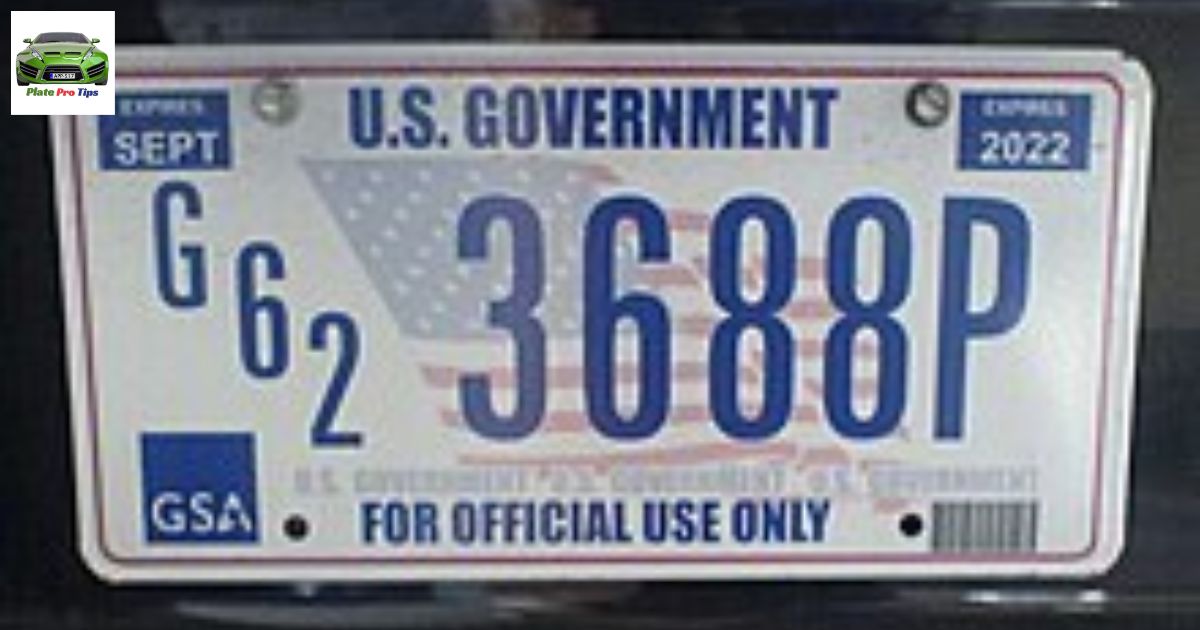Vehicle license plates are an integral part of vehicle identification and registration in the United States. These plates serve as a unique identifier for each vehicle, allowing authorities to track ownership, registration, and compliance with relevant laws and regulations. In this comprehensive guide, we will delve into the various aspects of vehicle license plates in the United States, including their designs, serial formats, and the processes involved in their issuance and renewal.
Designs and Serial Formats
Serial Formats
“Vehicle license plates in the United States follow specific serial formats, which vary from state to state. These formats typically consist of a combination of letters and numbers, with the patterns determined by each state’s Department of Motor Vehicles (DMV) or equivalent agency. For example, the iconic California License Plate features a unique combination of letters and numbers, reflecting the state’s vibrant culture and identity.”
Some common serial formats include:
- Alphanumeric: A combination of letters and numbers, such as “ABC 123”.
- Numeric: Consisting of only numbers, like “1234567”.
- Vanity: Personalized plates with custom letter and number combinations chosen by the vehicle owner.
Designs
License plate designs in the United States are as diverse as the states themselves. Each state has the freedom to create unique designs that reflect their cultural heritage, natural landscapes, or specific themes. These designs often incorporate state mottos, symbols, or landmarks, making them easily recognizable and visually appealing.
Here are a few examples of distinctive license plate designs from various states:
- Florida: Features an orange and green color scheme with the iconic “Sunshine State” slogan.
- Texas: Displays the iconic lone star and the state’s outline shape.
- Alaska: Showcases scenic landscapes and wildlife, such as mountains and bears.
Printing of Registration Number
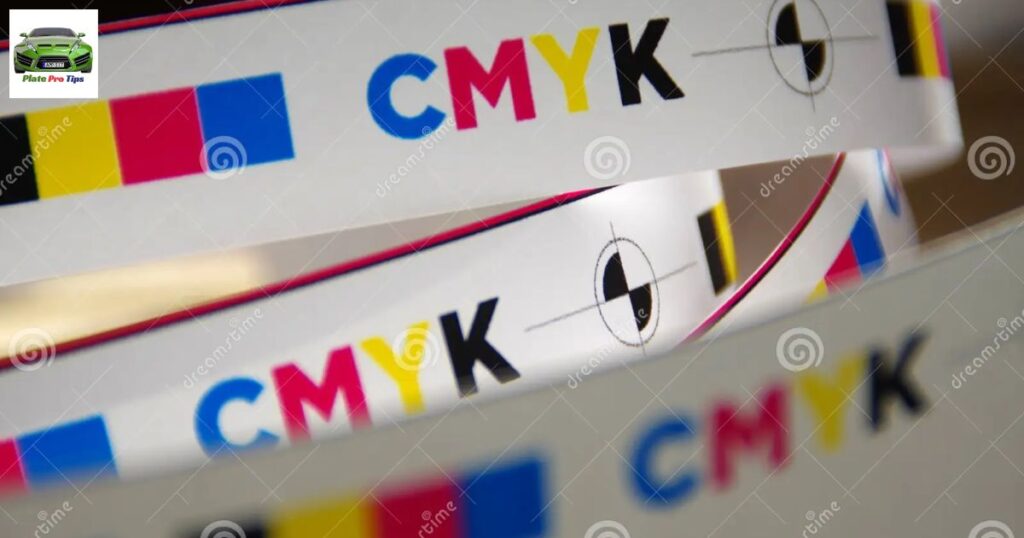
The registration number, which is the unique identifier assigned to each vehicle, is typically printed on the license plate using various techniques, including embossing, stamping, or digital printing. This number is essential for law enforcement and vehicle tracking purposes.
Plate Sizes
While plate sizes can vary slightly between states, the standard dimensions for passenger vehicle license plates in the United States are approximately 12 inches by 6 inches (30.48 cm by 15.24 cm). However, plate sizes may differ for other vehicle types, such as motorcycles, trailers, or commercial vehicles.
Showing Current Registration on Plates
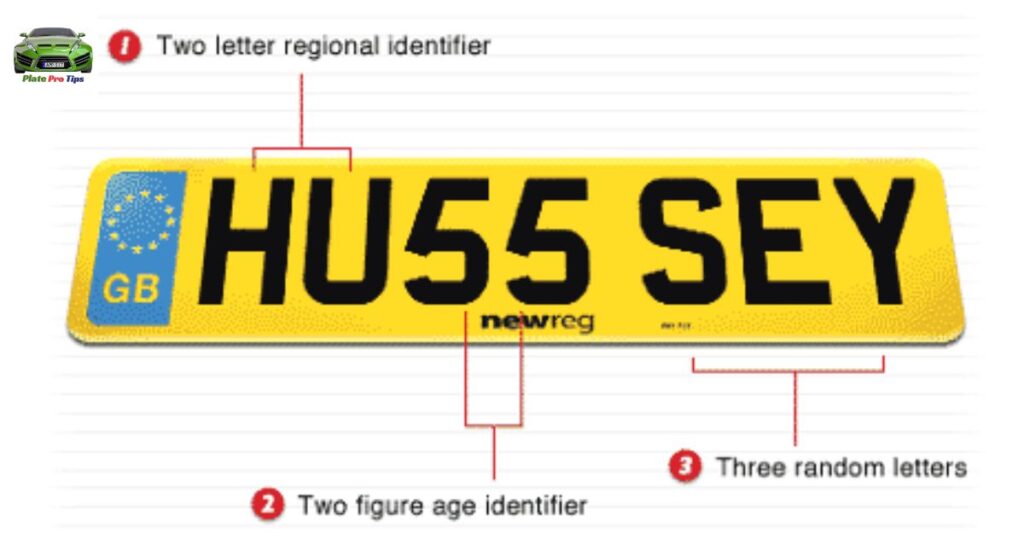
To ensure compliance with registration requirements, most states employ various methods to indicate the current registration status on license plates. These methods may include:
- Stickers: Many states issue registration stickers that must be affixed to the license plate, indicating the expiration date of the registration.
- Renewal Decals: Some states provide renewal decals that replace a portion of the license plate, effectively updating the expiration date.
- Digital Verification: With advancements in technology, some states now utilize digital verification systems, where law enforcement can instantly check the registration status of a vehicle without relying on physical indicators on the plate.
Life Cycle
License plates in the United States have a defined life cycle, with specific processes for issuance, renewal, and replacement. Here’s a typical life cycle for a license plate:
- Initial Issuance: When a vehicle is first registered, the owner is issued a new license plate by the state’s DMV or equivalent agency.
- Renewal: Vehicle registrations need to be renewed periodically, typically on an annual or biennial basis. During the renewal process, owners may receive new stickers, decals, or entirely new plates, depending on the state’s policies.
- Transfer: If a vehicle is sold or transferred to a new owner, the license plate may be transferred to the new owner or replaced with a new plate, depending on state regulations.
- Replacement: In cases of plate damage, loss, or theft, vehicle owners can request a replacement plate from the DMV, usually for a nominal fee.
- Plate Retirement: Over time, license plate designs may be retired and replaced with new designs, prompting a statewide reissuance process.
Mounting
Proper mounting of license plates is crucial for compliance with state laws and regulations. Most states require license plates to be securely mounted on the front and rear of the vehicle, ensuring visibility and readability for law enforcement and tollway cameras.
Specific mounting guidelines may vary by state, but generally, license plates should be affixed in a manner that prevents obstruction, damage, or tampering. Failure to properly mount or display license plates can result in fines or citations.
Temporary and Transit Registrations
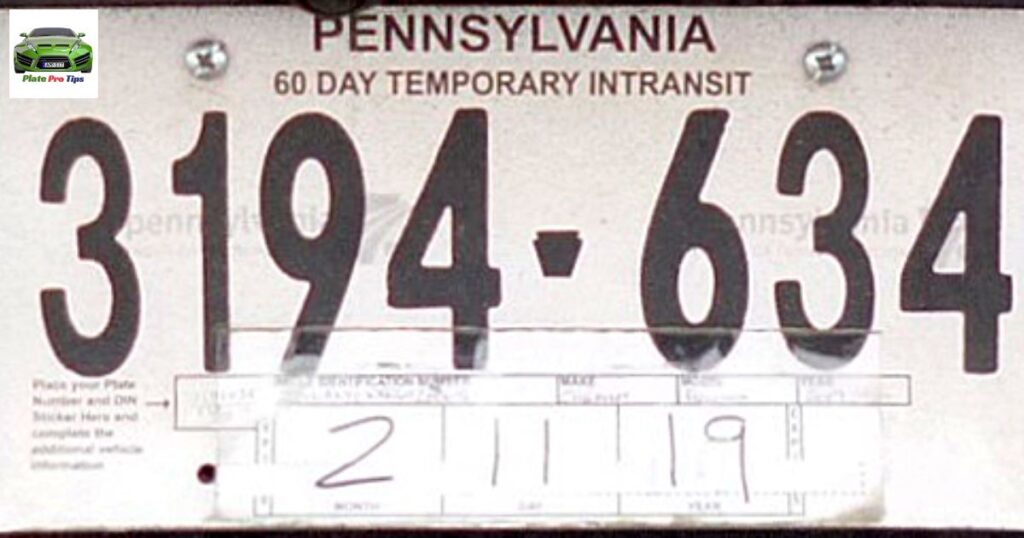
In certain situations, such as when purchasing a new vehicle or moving to a different state, temporary or transit registrations may be issued. These registrations provide a grace period for vehicle owners to comply with registration requirements while allowing them to legally operate their vehicles.
- Temporary Registrations: Issued to new vehicle owners or those who have recently moved to a state, temporary registrations serve as a provisional license plate until the permanent plate is issued.
- Transit Registrations: These registrations are provided to individuals who are temporarily operating a vehicle in a state where it is not registered, such as during cross-country moves or extended visits.
Both temporary and transit registrations have expiration dates and must be replaced with permanent plates within the specified timeframe.
This covers the first half of the outline, focusing on the designs, serial formats, printing methods, plate sizes, registration indicators, life cycle, mounting, and temporary/transit registrations related to vehicle license plates in the United States. In the next section, we will explore vanity and specialty plates, professional and governmental plates, general registration license plates, and diplomatic license plates.
Vanity and Specialty Plates
Vanity Plates
Vanity plates, also known as personalized or custom plates, allow vehicle owners to choose a unique combination of letters and numbers for their license plates. These plates often hold personal significance, showcase interests or affiliations, or serve as a form of self-expression.
To obtain a vanity plate, vehicle owners typically submit their desired plate configuration to the state’s DMV, along with an additional fee. The DMV then reviews the request to ensure it complies with state regulations and does not contain offensive or inappropriate content.
Vanity Plate Lawsuits
The issuance of vanity plates has occasionally sparked legal disputes and lawsuits, particularly when plates are deemed offensive or discriminatory by certain groups or individuals. These cases often revolve around the interpretation of free speech rights and the boundaries of acceptable expression on license plates.
One notable example is the case of “COPSLIE” vanity plates, which led to a legal battle over freedom of speech and the state’s authority to censor license plate messages.
Low-digit Plates
In some states, low-digit plates (plates with fewer digits, such as “1” or “12”) are highly coveted and may be auctioned off or sold at premium prices. These plates are often sought after for their perceived exclusivity or status symbol.
Specialty Plates
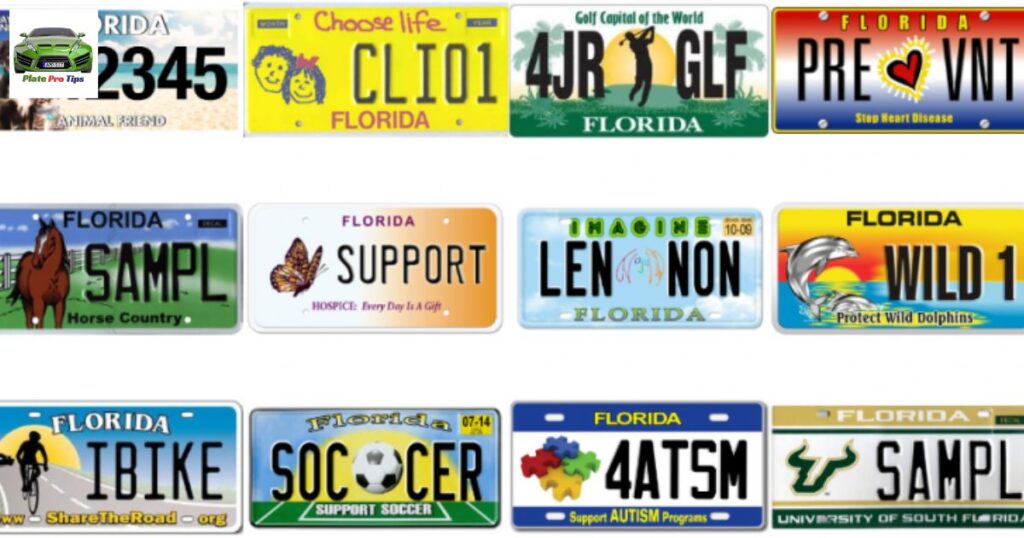
Specialty plates, also known as special interest or organizational plates, are issued by states to promote specific causes, organizations, or interests. These plates typically feature unique designs or logos and often require an additional fee, with a portion of the proceeds going toward the supported cause or organization.
Types
Specialty plates can be categorized into various types, including:
- Cause-related plates: Promoting awareness or supporting causes such as environmental conservation, breast cancer research, or veterans’ organizations.
- University plates: Featuring logos and colors of specific colleges or universities.
- Sports team plates: Displaying logos and colors of professional or collegiate sports teams.
- Organizational plates: Representing non-profit organizations, clubs, or associations.
Examples
Here are a few examples of specialty plates from different states:
- Florida: Features plates supporting organizations like the National Audubon Society, the Florida Salutes Veterans plate, and collegiate plates for various universities.
- Texas: Offers plates for organizations like the Boy Scouts of America, as well as plates supporting causes like cancer research and animal welfare.
- California: Provides specialty plates for environmental causes, collegiate plates, and plates supporting organizations like the California Coastal Commission.
Restrictions
While vanity and specialty plates offer vehicle owners the opportunity for personalization and expression, most states impose certain restrictions to maintain decency and public standards. These restrictions may prohibit plates containing profanity, hate speech, or content that could be deemed offensive or discriminatory.
Additionally, some states limit the number of characters or impose specific formatting requirements for vanity plates to ensure readability and compliance with established standards.
Confederate States–affinity Plates
A controversial issue surrounding specialty plates in recent years has been the debate over Confederate States–affinity plates, which feature Confederate symbols or logos. These plates have faced criticism and legal challenges from groups and individuals who view them as promoting or glorifying a racist ideology.
Several states have discontinued or faced lawsuits over the issuance of such plates, reflecting the ongoing societal tensions and debates surrounding the display of Confederate symbols in public spaces.
Professional and Governmental Plates
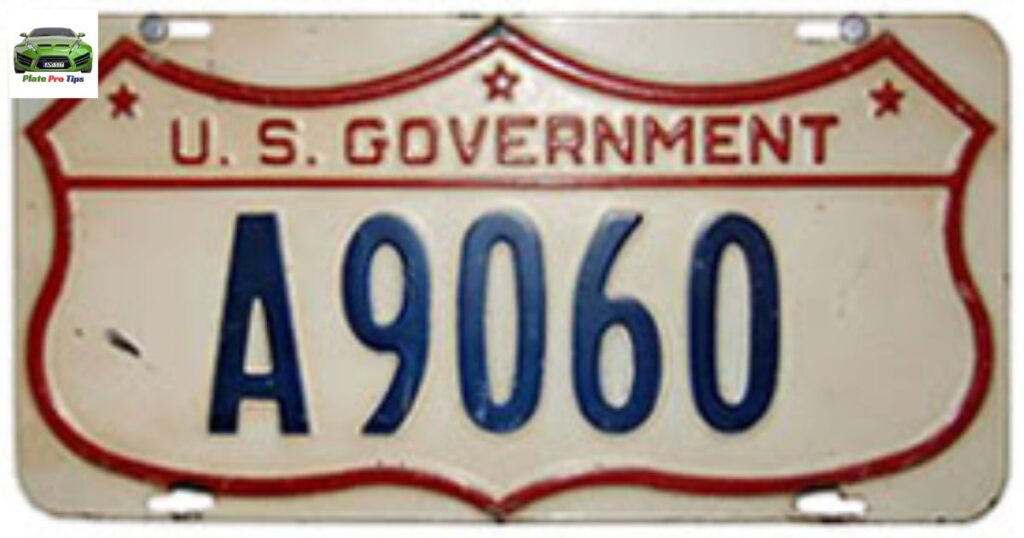
Department-specific Examples
Certain government agencies, departments, or professions may be issued specialized license plates for official use. These plates often feature specific designs, color schemes, or emblems that distinguish them from general registration plates. Examples include:
- Law Enforcement: Police vehicles may have plates with distinct designs or the word “POLICE” emblazoned on them.
- Fire Department: Fire trucks and emergency response vehicles may have plates with the word “FIRE” or specific emblems.
- Government Agencies: Vehicles used by various government agencies, such as the Department of Transportation or the Forest Service, may have plates with agency logos or abbreviations.
State-specific Examples
Some states have unique designs or formats for professional and governmental plates. For instance:
- California: Uses a distinct color scheme (blue and yellow) for state-owned vehicles, with the plate starting with the letter “E”.
- Texas: Issues plates with the word “EXEMPT” for vehicles owned by government agencies or specific professions, such as law enforcement or firefighters.
- New York: Utilizes a distinct format (e.g., “A12345”) for state-owned vehicles, with the first letter indicating the specific agency or department.
General Registration License Plates
While vanity, specialty, and professional plates cater to specific needs or interests, most vehicles on the road display general registration license plates. These plates follow the standard designs and serial formats determined by each state’s DMV.
The issuance of general registration plates is typically tied to the vehicle registration process, where owners must provide the necessary documentation, pay applicable fees, and comply with state regulations. These plates serve as the primary means of vehicle identification and are crucial for tracking ownership, registration, and compliance with relevant laws and regulations.
Diplomatic License Plates
Diplomatic license plates are issued to vehicles owned by foreign diplomats, consular officials, and international organizations operating within the United States. These plates follow a distinct format and design, often featuring the letters “CMD” (Corps Diplomatique) or “ONU” (Organisation des Nations Unies) followed by a unique set of numbers.
Diplomatic plates serve as a visual indicator of the vehicle’s diplomatic status, granting certain privileges and immunities under international law. These plates are issued by the U.S. Department of State and are subject to specific regulations and protocols.
It’s worth noting that the issuance and usage of diplomatic plates are governed by international agreements and treaties, ensuring proper identification and facilitating the diplomatic missions of foreign representatives within the United States.
This comprehensive guide has covered the various aspects of vehicle license plates in the United States, including their designs, serial formats, registration processes, vanity and specialty plates, professional and governmental plates, general registration plates, and diplomatic plates. By understanding these intricate details, vehicle owners and enthusiasts can appreciate the significance and complexity of this essential component of vehicle identification and registration.
Here are some additional sections to further expand on the topic of vehicle license plates in the United States:
Regional Variations
While states have autonomy in designing and issuing license plates, there are often regional variations and trends within certain geographical areas. For instance:
Northeast Region:
- States like New York, New Jersey, and Massachusetts often feature simpler, more minimalist designs with a focus on readability.
- Colors tend to be more subdued, with shades of blue, green, and white being common.
Southern Region:
- States like Florida, Texas, and Louisiana frequently incorporate vibrant colors and imagery related to their regional identity, such as beaches, landscapes, or state mottos.
- Plate designs may also showcase local flora and fauna, like the orange on Florida’s “Sunshine State” plates.
Western Region:
- States like California, Colorado, and Oregon often incorporate natural scenery, such as mountains, forests, or coastlines, into their plate designs.
- Earthy tones and shades of green, blue, and brown are popular color choices.
These regional variations not only reflect the diverse landscapes and cultures of different parts of the country but also contribute to the unique identities and pride associated with each state’s license plates.
Plate Numbering Systems
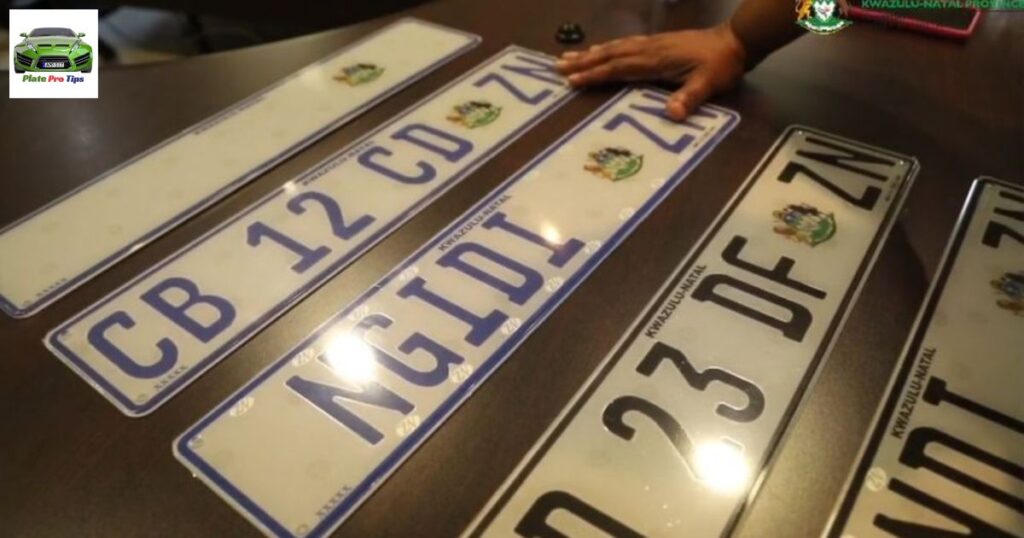
In addition to the serial formats mentioned earlier, some states employ specific numbering systems or conventions for their license plates. For example:
Sequential Numbering: Many states issue plates with sequential number combinations, starting from a low number and incrementing as new plates are issued.
Geographic Coding: Certain states, like New York and Pennsylvania, incorporate geographic coding into their plate numbering systems, where specific letter or number combinations represent different counties or regions within the state.
Age-based Numbering: A few states, such as Delaware and South Dakota, use numbering systems that correlate with the vehicle owner’s age or birth year, allowing for easy identification of older or newer registrations.
Alphanumeric Combinations: Some states, like California and Illinois, utilize a combination of letters and numbers in their plate numbering systems, potentially allowing for a larger range of unique plate combinations.
Understanding these numbering systems can provide insights into a vehicle’s registration history, geographic origin, or even the owner’s age or birth year, depending on the state’s specific conventions.
Anti-counterfeit Measures
To combat the illegal reproduction or counterfeiting of license plates, many states have implemented various security features and anti-counterfeit measures. These measures aim to enhance the integrity of the plate issuance process and prevent the unauthorized use of license plates. Some common anti-counterfeit measures include:
Reflective Coatings: Many states apply reflective coatings or materials to their license plates, making them more visible to law enforcement and cameras, while also making counterfeiting more difficult.
Watermarks and Holograms: Some plates incorporate watermarks, holograms, or other secure markings that are challenging to replicate, serving as a visual indicator of authenticity.
Tamper-evident Materials: States may use specialized materials or adhesives that become visibly damaged or distorted if attempts are made to remove or alter the plate, deterring unauthorized modifications.
Digital Verification Systems: As mentioned earlier, some states have implemented digital verification systems that allow law enforcement to instantly verify the authenticity and registration status of a license plate without relying solely on physical indicators.
These anti-counterfeit measures not only help maintain the integrity of the license plate system but also contribute to public safety by making it easier to identify and apprehend individuals involved in vehicle-related crimes or registration violations.
Environmental Considerations
As concerns about environmental sustainability and emissions reduction grow, some states have begun exploring eco-friendly alternatives for license plate production and materials. These initiatives aim to reduce the environmental impact associated with the manufacturing and disposal of traditional license plates. Some examples include:
Recycled Plate Materials: Several states, such as Texas and Florida, have implemented programs to recycle old license plates and incorporate recycled materials into the production of new plates, reducing waste and conserving resources.
Plant-based Materials: Some states are exploring the use of plant-based or biodegradable materials for license plate production, potentially reducing the reliance on traditional plastic or metal materials.
Digital License Plates: While still in the early stages of development and adoption, digital license plates that can be updated remotely have been proposed as a way to eliminate the need for physical plate replacements, thereby reducing waste and resource consumption.
These environmental considerations reflect a growing awareness of the need to adopt more sustainable practices in various industries, including the production and management of vehicle license plates.
By exploring these additional sections, readers gain a deeper understanding of the regional variations, numbering systems, anti-counterfeit measures, and environmental considerations surrounding vehicle license plates in the United States. This comprehensive coverage provides a holistic perspective on this essential aspect of vehicle identification and registration.
FAQ,s
What state has the most license plates?
California has the highest number of registered vehicles, making it the state with the most license plates in the United States.
What are US government license plates?
US government license plates are special plates issued to vehicles owned or leased by various federal government agencies. They typically feature distinct designs and serial numbers, indicating government ownership.
What is AC number plate in Karachi?
The AC number plate in Karachi denotes vehicles registered with the Excise and Taxation Department for government officials, including Assistant Commissioners (AC).
What is the red number plate in Punjab?
The red number plate in Punjab, Pakistan, signifies vehicles registered under the category of government-owned or government-leased vehicles.
What’s the coolest state license plate?
Opinions vary, but many consider Colorado’s license plate featuring the iconic Rocky Mountains against a vibrant sunrise as one of the coolest designs.
conclusion
In conclusion, vehicle license plates play a crucial role in the United States. They serve as unique identifiers for vehicles, aiding law enforcement in tracking down offenders and ensuring public safety. Additionally, license plates are a reflection of state pride and identity, with each state having its own distinct design. Overall, while seemingly mundane, license plates are an essential component of the transportation system, serving both practical and symbolic purposes in the United States.
In summary, the significance of vehicle license plates cannot be overstated in the United States. They serve as vital tools for law enforcement, facilitate vehicle registration, and represent state identity. Whether it’s for ensuring road safety or showcasing state pride, license plates are an integral part of American motoring culture.

I’m Shoaib, a passionate blogger with 5 years of experience. I love writing about tech. My goal is to share useful information and insights with you. Explore my website to discover exciting content on various topics!
